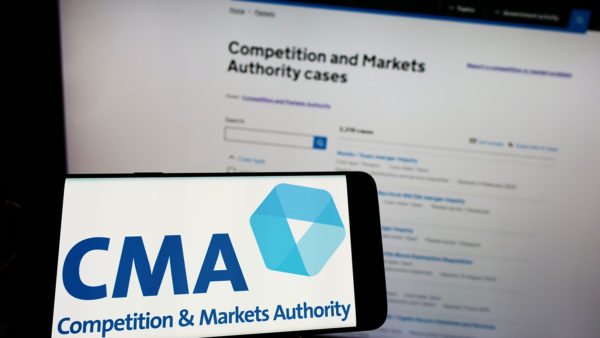
In the second of our series looking at the implications of the Building Safety Bill, John Forde discusses the roles of duty holders and likely competency requirements.
One of the key recommendations of Building a Safer Future, Dame Judith Hackitt’s 2018 review of the building industry, was the concept of "duty holders": key players in the commissioning, design, construction and maintenance of high-risk buildings who would be made legally responsible for managing safety risk.
The government’s 2019 Consultation document announced that new duty holder roles would be created, following the same terminology as the Construction (Design and Management) Regulations 2006, each with defined responsibilities for managing building safety.
The draft Building Safety Bill, published in July 2020, provides some of the scaffolding to construct the duty holder regime.
The draft Bill establishes the Building Safety Regulator, who will have powers to prescribe “competence requirements” on “prescribed persons” and prescribe documents to be supplied with building control applications. The draft bill also provides for amendments to the Building Act, to set out duty holder requirements and impose criminal liability on those who don’t meet their obligations.
Somewhat frustratingly, the draft Bill doesn’t provide any further detail about who the duty holders will be or what their specific responsibilities will involve. This detail will be covered in secondary legislation which has yet to be made publicly available.
The five main duty holder roles
The explanatory notes published with the draft Bill provide some more detail about the proposed duty holder regime, essentially repeating the initial 2019 proposals. Duty holders involved with “higher-risk” buildings, as they are now defined, will have formal responsibilities to ensure compliance with the Building Regulations.
The notes identify five main roles, again following the CDM Regulations:
- Client: Any person or organisation for whom a construction project is carried out.
- Principal Designer: Appointed by the Client, and responsible for monitoring and coordinating the pre-construction phase when most design is carried out.
- Principal Contractor: Appointed by the Client, and responsible for planning managing monitoring and coordinating the construction phase.
- Designer: Anyone carrying on a trade, business or undertaking where they prepare or modify a design or instruct any person under their control to do so.
- Contractor: Anyone managing or controlling construction work (including building, altering, maintaining or demolishing a building or structure) and also anyone who directly employs or engages construction workers.
The notes clarify that duty holder roles may be fulfilled either by an individual or a legal entity, and that some duty holders may hold more than one role in a project.
What will duty holder responsibilities be?
Pending the issue of the secondary legislation, the draft Bill provides some basic obligations that give us a flavour of what duty holder responsibilities will look like:
- A general duty on “prescribed persons” to govern the way building work is carried out. The Notes say this is to ensure duty holders engage with their requirements and not view building regulations as "a tick-box exercise".
- The Bill creates powers to prescribe "competence requirements" on the principal designer and principal contractor and “any prescribed person” (which presumably covers the other duty holder roles).
- Anyone appointing a "prescribed person" must take reasonable steps to assess the competency of those they employ. In particular, Clients will need to provide a signed declaration as part of building control applications that it has assessed and is content with the competence of the Principal Designer and Principal Contractor.
- "Prescribed information" (formerly referred to as “the golden thread”) is expected to be required in digital format.
- A requirement for all Dutyholders to report safety concerns to the Regulator throughout the building lifecycle, as part of a Mandatory Occurrence Reporting System.
While we do not have full clarity about the various responsibilities of ‘duty holders’, the draft Bill makes it clear what happens if they don’t comply. The Regulator will have powers to prosecute all offences in the Building Act, and prosecutions under the Act may be brought up to 10 years from the date of the alleged breach. Critically, breaches of the new requirements will be criminal offences (meaning they can’t be contracted out of), carrying punishment of a fine or up to two years’ imprisonment.
The government hasn’t clarified whether corporate duty holders will be required to nominate individuals as "accountable persons" for their organisation, as was originally suggested in the 2019 Consultation. However, the draft Bill provides that where an offence under the Building Act is committed by a corporate body with the consent or connivance of a director or manager or is attributable to their neglect, that person as well as the organisation may be prosecuted. This reflects a key recommendation of the Hackitt Review of having identifiable persons who can be held accountable for building safety risk, even within large organisations.
The proposed duty holder regime raises a number of complex issues for construction projects. Clients and other duty holders will have to lift their game in the procurement of appointees to ensure that competency requirements are met and maintained. There’s likely to be a lot of wrangling between duty holders as to their respective liability for the safety of a construction project. It’s also unclear how and to what extent duty holders will be able to obtain insurance to cover their onerous new obligations.
There are no easy answers to these questions – and until we see secondary legislation setting out the duty holder regime in more detail, it will be difficult for the construction industry to start planning for the future.
John Forde is a managing associate at Trowers & Hamlins.









